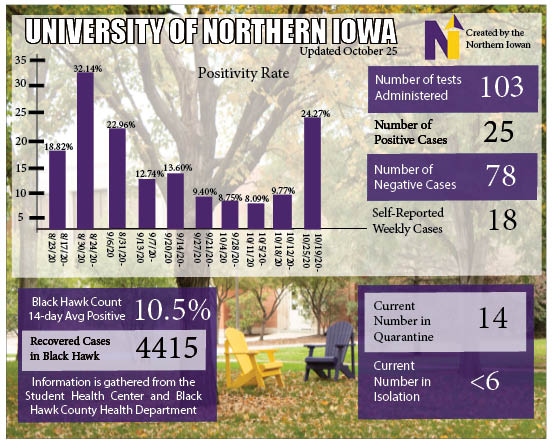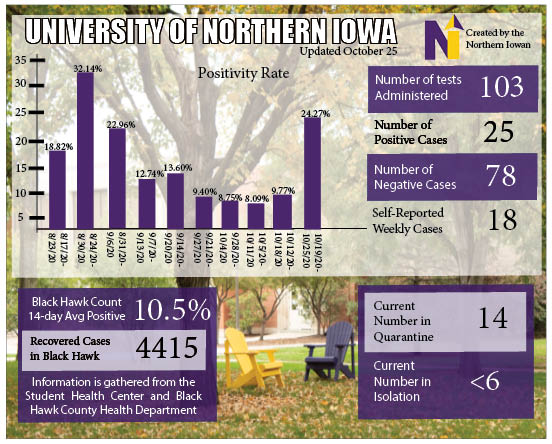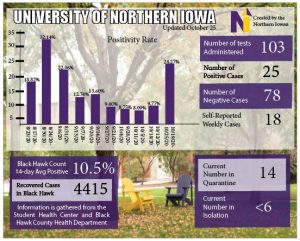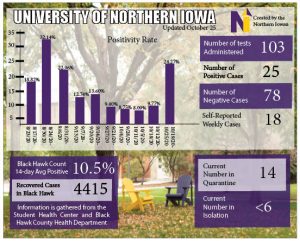COVID-19 on campus: numbers rise
Oct 26, 2020
This week’s COVID-19 statistics from the UNI Student Health Center, released Friday, Oct. 23, showed a significant increase in the campus’ positivity rate over the past week.
As depicted in the accompanying graphic, from Oct. 19-25, the Student Health Center reported a 24.27% positivity rate, with 25 positive cases through Student Health Center testing.
This is the highest positivity rate and number of new cases that the Student Health Center has reported since the week ending Sept. 6, when 35 new cases were reported for a 22.96% positivity rate.
However, it is worth noting that the positivity rate may decrease slightly today when the Student Health Center updates last week’s data to include any tests conducted on Friday. Since the end-of-week updates only include data collected through Thursday, Friday numbers are added to the weekly total by noon on the following Monday and are therefore not included in the NI’s weekly analysis.
Last week, the NI reported a 12.5% positivity rate for the period from Oct. 12-18, which was what the university had reported at press time. When Friday’s numbers were added on Oct. 19, however, that rate dropped to 9.77%.
Even if a similar phenomenon occurs with this week’s numbers, though, the case counts and positivity rate are still likely to represent a substantial jump for the UNI campus.
Cases and positivity rates in Black Hawk County have also been rising steadily since early October, according to the Black Hawk County Health Department website. This week’s 10.5% 14-day average positivity rate marks the first time the county has moved above 10% since the NI began reporting county data this fall.
The UNI COVID-19 Response Team predicted the trend on Thursday in a campus-wide email, noting that the onset of winter is a contributing factor and asking the campus community to be “especially vigilant” in following public health procedures.
“Cooler weather is officially upon us, meaning more people will be staying indoors – a hibernation season that coincides with the start of the flu season,” they wrote. “With viruses being more prevalent this time of year, it’s logical that national health experts are predicting a rise in COVID-19 cases, as well.”












